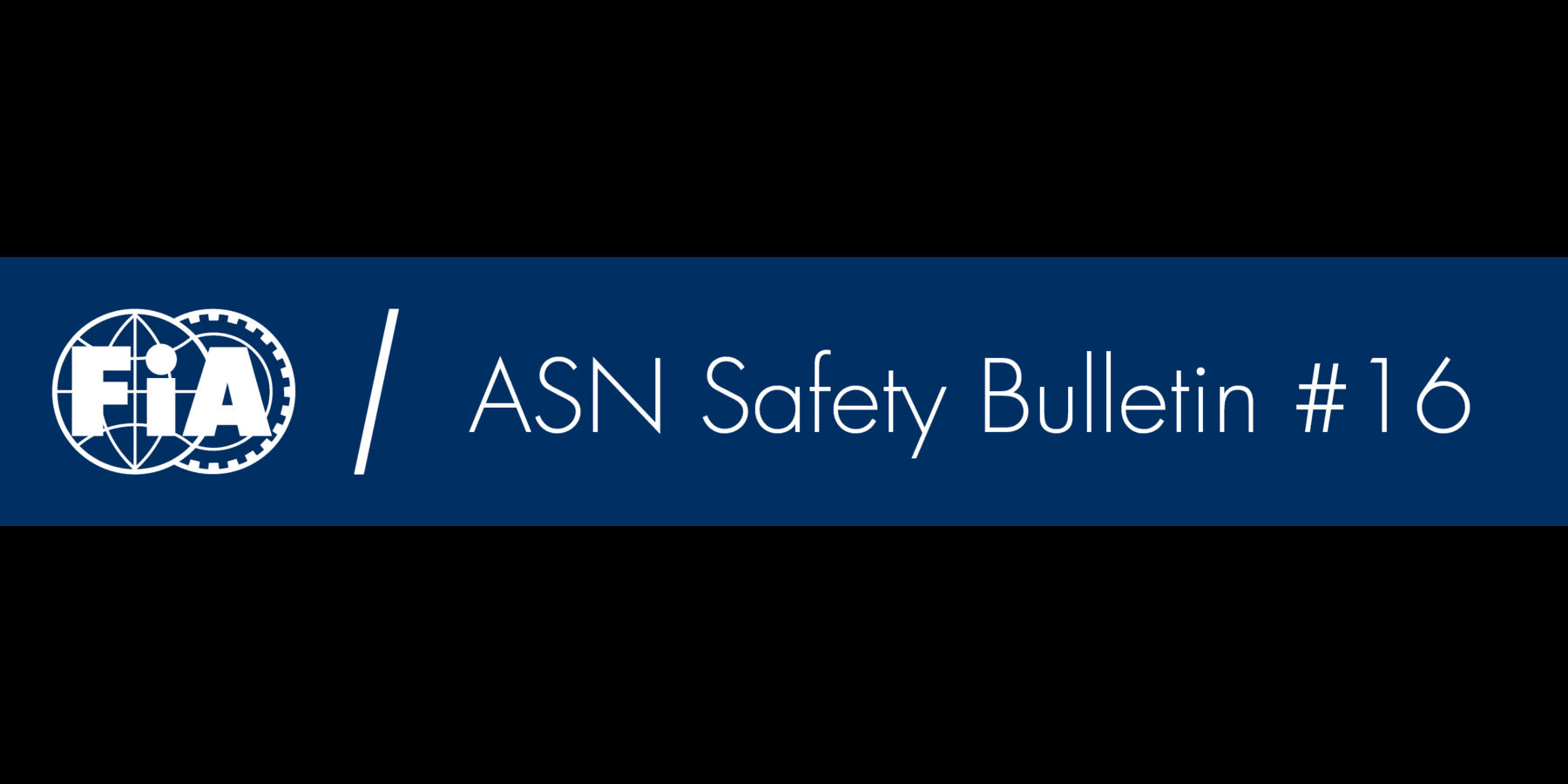ASN Safety Bulletin #16 Racing Nets Installation
21 May 2022 > Safety Bulletin
Dear Colleagues,
Racing Nets are designed to provide lateral restraint to the driver’s head and shoulders during lateral and frontal angled impacts. When racing nets are fully attached to the chassis or safety cage, they also provide restraint to the seat for the driver. Racing nets can also be attached directly to FIA-approved 8862-2009 seats that have been designed with specific attachments points.
The racing nets should be installed on both sides of the seat and are intended to be used only in Touring and Grand Touring Cars participating in circuit competitions.
In order for the racing nets to work effectively, they should be installed and adjusted in accordance with the Racing Nets Installation Specification for Touring and Grand Touring Cars, which can be downloaded HERE. The below paragraphs highlight the most relevant installation requirements of FIA-approved 8863 racing nets (see Technical List n°48) in association with FIA-approved 8862 and 8855 seats.
The video below showcases the different aspects and advantages of a racing net.
Positioning main triangle of the racing net
In order to ensure optimal protection, it is imperative that the driver is, first, correctly fitted to the FIA-approved 8862 or 8855 seat (see ASN Safety Bulletin #7 for more information). Once this has been achieved, the FIA-approved 8863 Racing Net shall be installed as detailed in Figure 1, with the upper-strap correctly positioned relative to driver’s eye position and the lower-strap correctly positioned relative to the seat-side-shoulder.
This requirement is particularly important because the racing net may not provide adequate support to the head or shoulder during a lateral or frontal angled impact if it is installed too low or too high respectively.
Figure 1: Example of racing net installation with upper-strap outside the seat-side-head
Note: NOM dimensions for guidance only
In addition, the racing nets shall be as close as possible to the driver’s body and helmet. It is therefore advised to run the upper-strap inside the seat-side-head support as shown in Figure 2.
Figure 2: Photograph showing upper-strap inside the seat-side-head,
shown with single-front-attachment design (internal view, but valid also for Dual-front-attachment)
Fitment of racing nets
Racing nets are "handed" by design, and care must be taken to fit the correct net on the correct side of the driver. The net horizontal webbings should be located towards the driver, to provide the smoothest surface for the helmet to slide on, with the net vertical webbing located away from the driver.
Quick release mechanism
When the driver is seated in the racing position with seatbelts tightened, he/she must be able to reach and open the quick release mechanisms of both nets. In addition, the position of the quick release mechanisms must allow rescue crews to easily access and open them.
Dual-front-attachment
The dual-frontal-attachment makes the installation of racing nets much easier and more flexible, making them adaptable to almost any type of car cockpit. However, in order to ensure optimized safety performance, the racing nets should be installed in accordance with Figure 3.
Figure 3. Positioning of net with Dual-front-attachment design
REAR STRAPS INSTALLATION FOR FIXED SEATS
Attaching of the front and rear straps of the racing net when viewed from above:
Figure 4: Attachment of front and rear straps
REAR STRAPS INSTALLATION FOR SLIDING SEATS
In order to ensure compatibility, each of the rear-upper-strap, rear-middle-strap and rear-lower- strap may attach to the roll cage (or chassis) at a minimum angle of 10° parallel to the longitudinal axis of the car as shown in Figure 5.
Parallel to longitudinal axis of the car ± 6° TYP
Figure 5: Attachment of front and rear straps
RACING NET TENSIONING
The racing net tension shall be as described in the Racing Nets Installation Specification and should not be loose.
Social Media Post
(Please feel free to copy and paste this for use on your social media channels)
Dear Colleagues,
Racing Nets are designed to provide lateral restraint to the driver’s head and shoulders during lateral and frontal angled impacts. When racing nets are fully attached to the chassis or safety cage, they also provide restraint to the seat for the driver. Racing nets can also be attached directly to FIA-approved 8862-2009 seats that have been designed with specific attachments points.
The racing nets shouldl be installed on both sides of the seat and are intended to be used only in Touring and Grand Touring Cars participating in circuit competitions.
In order for the racing nets to work effectively, they should be installed and adjusted in accordance with the Racing Nets Installation Specification for Touring and Grand Touring Cars, which can be downloaded HERE. The below paragraphs highlight the most relevant installation requirements of FIA-approved 8863 racing nets (see Technical List n°48) in association with FIA-approved 8862 and 8855 seats.
The video below showcases the different aspects and advantages of a racing net.
#FIASafety #FIAVisionZero
Best regards,
FIA Safety Department
If you have any topics you would like us to cover in future bulletins please send your suggestions to the FIA Safety Department.
Please visit the FIA website to read the other articles about the ASN Safety Bulletins. You can also read by clicking here.







